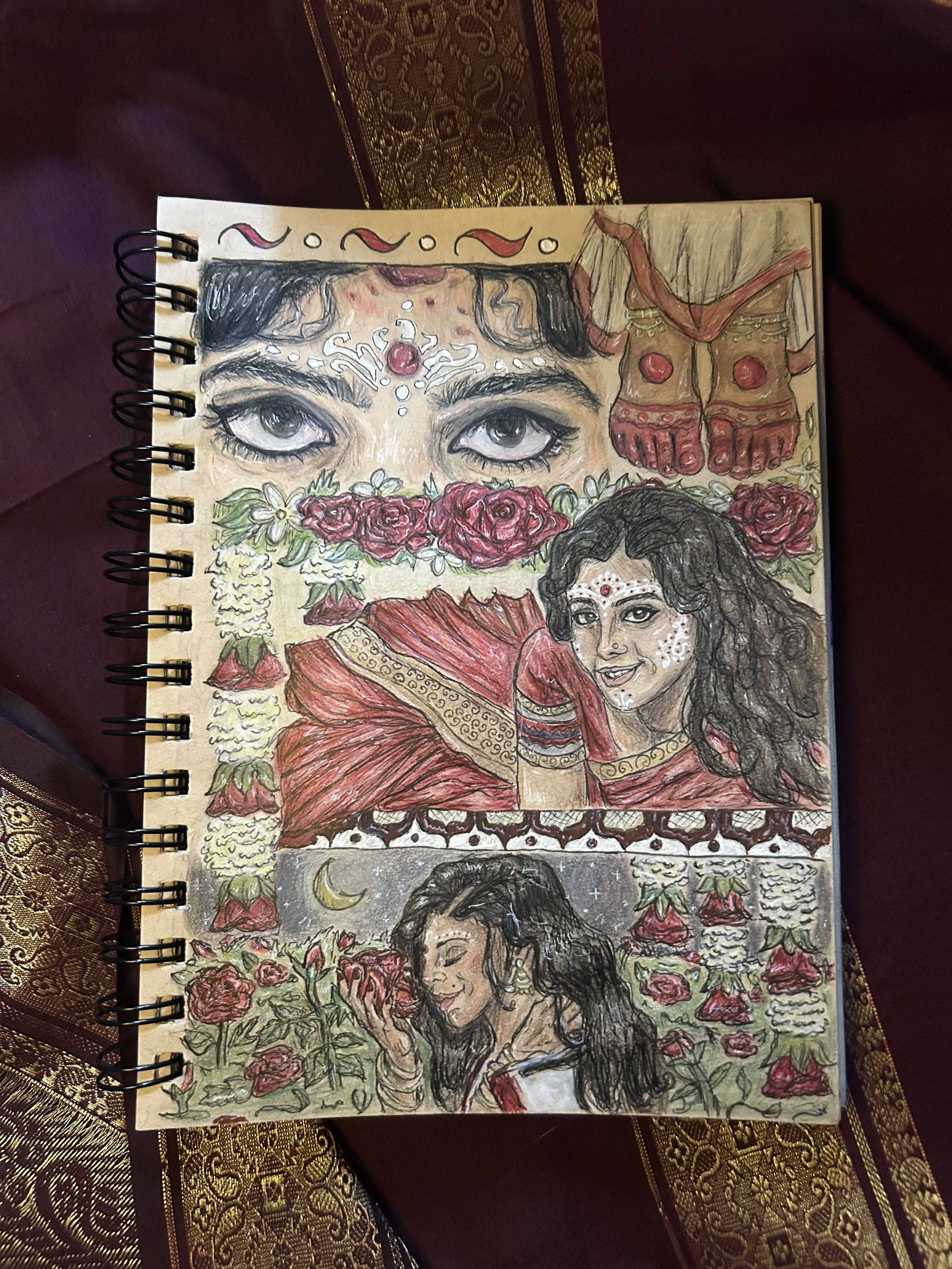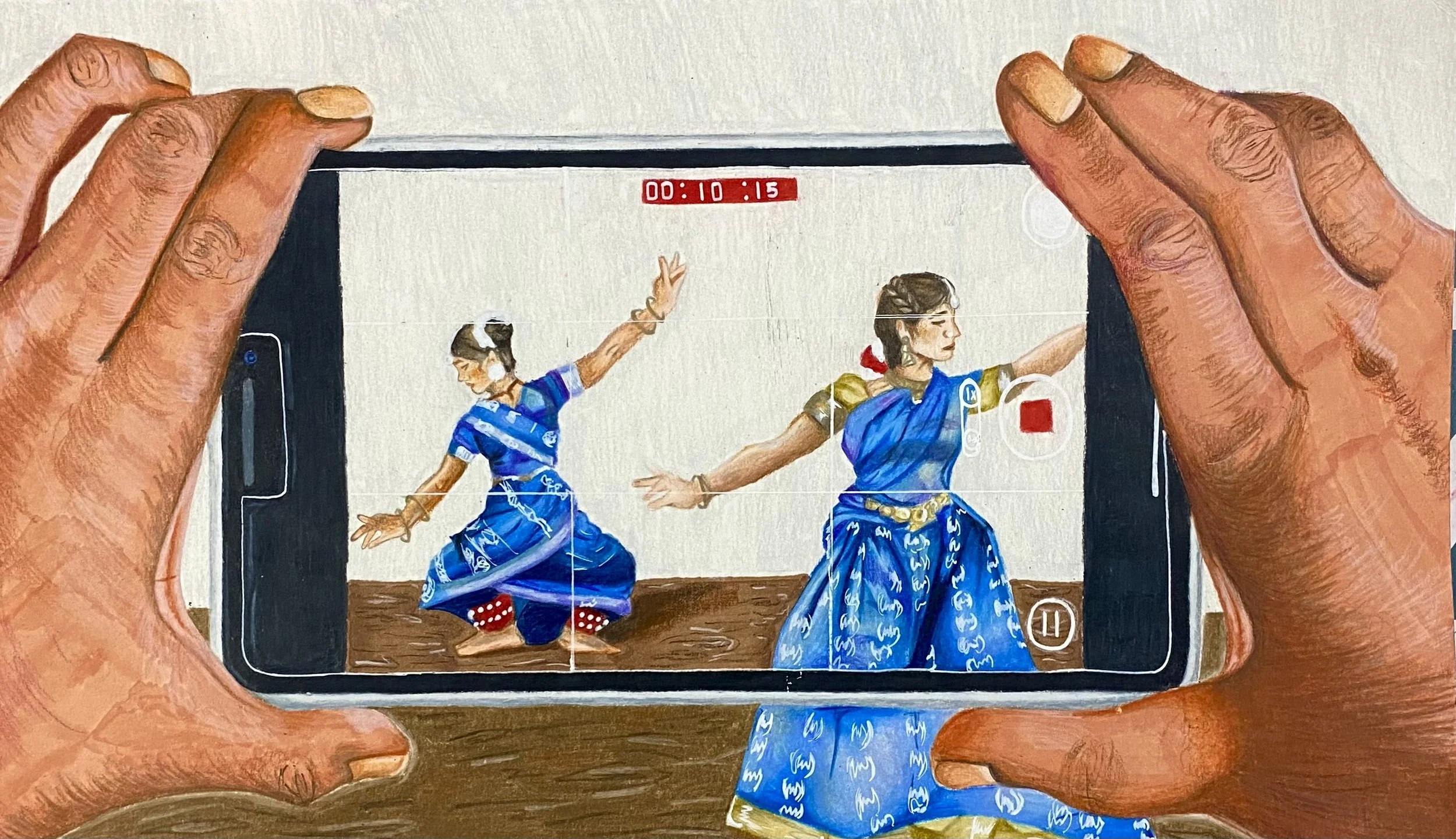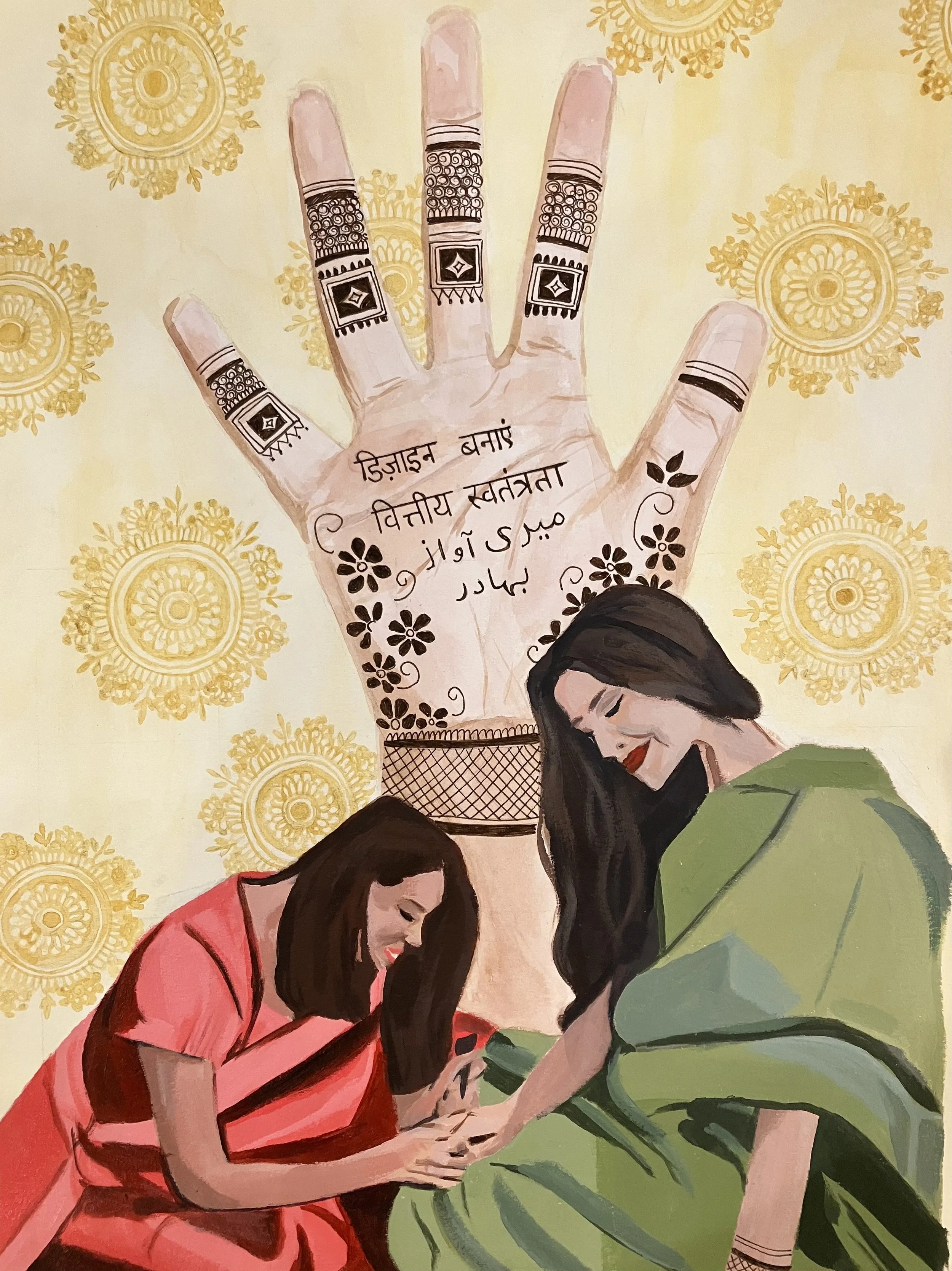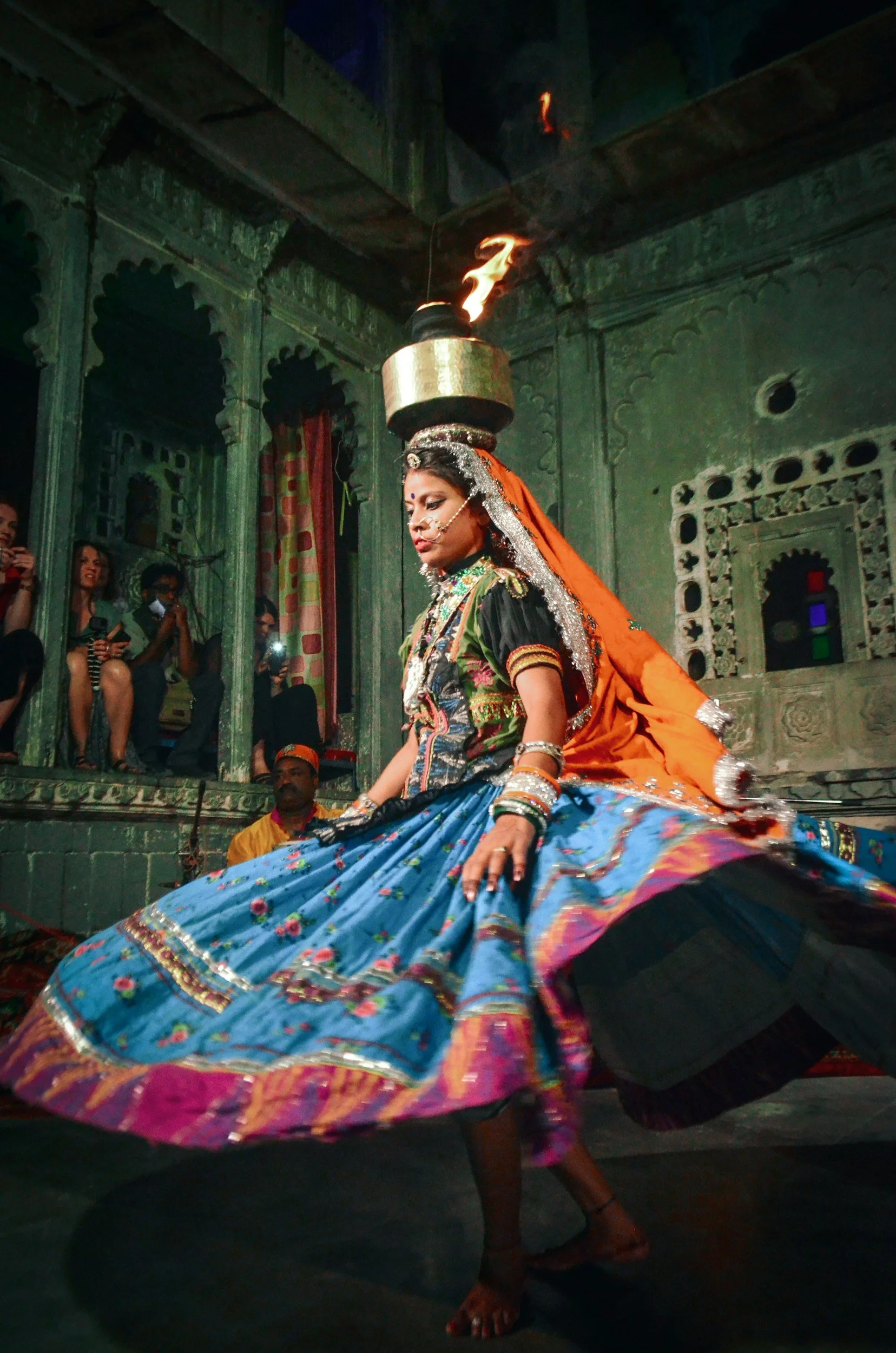
Hindus for Human Rights and the International Commission for Dalit Rights present the
HfHR Youth Voices Contest:
Art, Essay & Expression

2025 Civil Rights College Essay Contest Winners
1st Place
Where the Walls Once Spoke by Sid Bajaj
Bajaj traces how South Asian art, from Warli wall paintings to digital murals, has long served as a form of resistance and cultural memory, showing that while the mediums evolve, the act of documenting and challenging injustice endures across generations.
2nd Place
The Stain that Leaves Memories by Marum Malik
Malik reflects on their first experiences with henna and how its messy, imperfect process carries memory, culture, and resistance while keeping them connected to their roots.
3rd Place
The Snake Sang at Sunrise by Felix Joshi
Joshi uses the allegory of a snake born with once-revered but later-shunned scales to reflect on their own journey as a queer South Asian artist, reclaiming ancestral traditions of art and song to resist colonial legacies of shame and celebrate identity.
3rd Place
Bangles That Sing of Sorrow and Joy by Avanya Kam
Karn reflects on Bharatanatyam as more than classical dance; as a living act of resistance, reclaiming histories of devadasis, Tamil identity, and marginalized voices silenced by colonization and war.

2025 Civil Rights High School Essay Contest Winners
1st Place
Rhythms of Resistance by Agshara Harikaran
Harikaran reflects on Bharatanatyam as more than classical dance; as a living act of resistance, reclaiming histories of devadasis, Tamil identity, and marginalized voices silenced by colonization and war.
2nd Place
Sitar and Fish by Alia Gupta
Gupta explores how art across South and Southeast Asia has long functioned as resistance:preserving memory, challenging hierarchies, and sustaining cultural identity against empires, colonialism, and modern erasure. From folk scrolls and temple dances to digital art and street murals, it shows how beauty itself becomes a form of rebellion.
3rd Place
Voices through Pattachitra by Adrika Ghosh
This piece traces Ghosh’s journey with Pattachitra, from childhood memories of her grandfather’s tapestry and lullabies, to a workshop in West Bengal where she learned how scroll paintings and songs preserve culture, and finally to seeing them reborn at a protest as tools of unity and resistance.
3rd Place
The Folk Art that Taught Me Courage by Shridula Mondal
Mondal’s piece is a powerful reflection on Bengali Hindu identity, reclaiming a silenced history through art, memory, and the courage to speak and stand alone in the face of erasure.

1st Place
Tara Kodial
“Chardi Kala: Resilience in Action”
2nd Place
Grace Saji
“Roses and Thorns: A Bengali Woman’s Journey in Film”
2nd Place
Eshita Lahiry
“Dance Captured Through a Screen”
3rd Place
Zainab Habeeb
“Financial Freedom Teachings through Mehendi”
2025 Civil Rights Art Contest Winners
3rd Place
Aditi Karthik
“Dancer Breaking Free”
A Call to Dream, Create, and Speak Out for Justice
This year, as in several past years, Hindus for Human Rights travelled to Alabama to join the Selma Jubilee—walking across the Edmund Pettus Bridge alongside movement elders and new generations, remembering the powerful legacy of the Civil Rights Movement. We go not just to honor the past, but because we see ourselves in that story.
The struggle for civil rights in the United States was deeply connected to the Indian independence movement—and the victories of both led to profound changes in immigration and civil rights law. Those changes made it possible for so many of our families and communities to come to this country, build lives, and work toward justice.
The Student Art and Essay Contest is one way we honor and build on that legacy. Over the past few years, this contest has become a space for young people to explore how their identities, traditions, and imaginations connect with justice movements today. This year, we invite students to once again reflect, create, and raise their voices—to show us what dharma in action looks like now.
HIGH SCHOOL DIVISION (Grades 9–12)
Theme: For centuries, people in South Asia have used art—like folk paintings, music, and dance—to speak out against injustice. These art forms have helped communities resist colonial rule, caste discrimination, gender inequality, and government oppression. How do you see that same spirit alive today?
Categories:
Essay (500–800 words).
Visual Art (Painting, Collage, Digital Art, etc.)
Submit via: Google Form (guardian permission checkboxes for under-18 participants)
Prizes: Top 3 winners in each category receive cash awards, HfHR merchandise, and a feature on our website and newsletter.
Important: For safety, we will not post any minor’s work publicly without explicit guardian consent.
COLLEGE DIVISION (Undergrad)
Theme: For centuries, people in South Asia have used art—like folk paintings, music, and dance—to speak out against injustice. These art forms have helped communities resist colonial rule, caste discrimination, gender inequality, and government oppression. How do you see that same spirit alive today?
Track 1: Social Media Justice Challenge
Think short, creative, and powerful! Sample theme:
“Resisting Oppression: A Hindu Frame of Solidarity”
Acceptable formats:
Reels or TikToks (30–90 seconds)
Instagram carousels with a short captioned essay
Twitter/X/Bluesky/Threads threads
Spoken-word or storytelling videos
Use Hashtag: #HfHRVoices2025 and tag @hindusforhumanrights
Track 2: Creative Writing or Art Submission (Offline Option)
Not into social media? Prefer writing or creating more in-depth? We’ve got you.
Creative Writing (800–1200 words):
Art (Visual or Multimedia)
Prizes: Same as social media track. All entries are eligible for Grand Prize and category awards.
Bonus: Top entries will be featured on the HfHR website, blog, or newsletter—so your work gets a spotlight even if it’s not shared on social media.
Eligibility: Open to students in grades 9-12 and in undergraduate college who identify as part of the South Asian heritage living outside of South Asia (South Asian diaspora). Students from all religious backgrounds are welcome.














